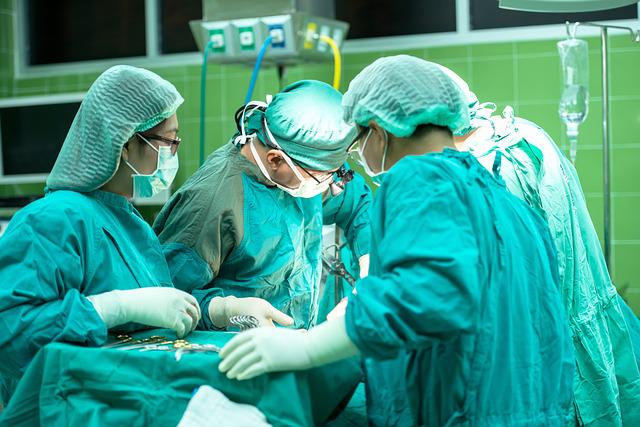
Nuclear imaging is a diagnostic test for medical diagnosis that uses radioactive markers to study organs or tissues in your body. It is an alternative to traditional imaging methods like X-rays and CT scans.
What is nuclear medical imaging?
Nuclear medicine imaging is a specialty of radiology that uses very small amounts of radioactive chemicals (radiopharmaceuticals) to study the function of your body. This is often done to detect anomalies very early in a disease's course.
What are the risks?
Radiation and allergic reactions are the main risks associated with nuclear imaging. These risks are extremely rare, and many patients do not experience any adverse reactions to these tests.
What are the radioactive tracers?
There are several different types of tracers used in nuclear medical imaging. Some tracers have a very narrow application to a certain type of tissue or an organ. Some work more broadly, such as tracking blood flow.

What are these radioactive tracers?
Tracers are made up of a series of carrier molecules that are bonded tightly to a radioactive atom. These carrier molecules may be injected in the patient, or they can be placed on an organ that will undergo scanning. Some tracers consist of a molecule which interacts with sugar or protein in the human body.
What are the different nuclear medical imaging techniques?
The two most common nuclear medicine imaging techniques are single photon emission computed tomography (SPECT) and positron emission tomography (PET). These two procedures are performed using radiopharmaceuticals that produce 3-dimensional images of internal organs.
SPECT utilizes gamma rays, which are emitted by radioactive tracers as they pass through the body. Gamma rays can be detected using a gamma scanner that generates digital signals. The computer uses these signals to create 3D pictures of your organs.
How long does a nuclear scan take?
A nuclear scan will take 30-60 minutes plus time for waiting after radioactive materials are given. The scans can be performed in a single session or over several days.
What are the commonest areas of your body that you will be scanned for?
During the nuclear scan, you will lie on a table in a machine that rotates around you. A camera on the SPECT captures images of your organs and body parts. The images sent to the computer are used to create 3D views of your internal organs, and other parts of your anatomy.

What are some of the radioactive tracers that can be used to perform nuclear medicine imaging techniques?
Depending on which part of your body is being examined, doctors can choose from a range of radioactive markers. These include elements like technetium.
What are these radioactive traces?
Most of the radioactive traces used for nuclear medicine imaging are made up of very specific molecules. These molecules may be a combination between a carrier that is tightly bound to a radioactive nuclear tracer and a molecule composed of an atom special that interacts a sugar or protein inside your body.
FAQ
What are the benefits of having medical systems?
Many people living in poor countries lack basic healthcare facilities. Many people who live in these areas are affected by infectious diseases such as malaria and tuberculosis, which can lead to premature death.
The vast majority of people in developed nations have regular checkups. Minor illnesses are usually treated by their general practitioner. Yet, many people suffer from chronic diseases such as diabetes and heart disease.
What are the various health care services available?
Patients need to know that they are able to access quality healthcare at any hour. We can help you, whether you have an urgent need or a routine checkup.
We offer many types of appointments including walk-in surgery, same-day operation, emergency department visits, outpatient procedures and so on. If you live far away from our clinic, we can also provide home health care visits. We will ensure that you get prompt treatment at the nearest hospital if you aren't comfortable visiting our clinic.
Our team is made up of nurses, doctors and pharmacists as well dentists. We are committed to providing outstanding patient service. Our goal is to make your visit as comfortable and painless possible.
What should I know about vaccines?
Vaccines offer a way to keep your body healthy and are extremely safe. Vaccines give you immunity to certain diseases. Vaccinations are typically given at certain times in childhood, adolescence or adulthood. Your doctor can discuss the best time to get vaccinated.
Statistics
- Price Increases, Aging Push Sector To 20 Percent Of Economy". (en.wikipedia.org)
- The healthcare sector is one of the largest and most complex in the U.S. economy, accounting for 18% of gross domestic product (GDP) in 2020.1 (investopedia.com)
- For instance, Chinese hospital charges tend toward 50% for drugs, another major percentage for equipment, and a small percentage for healthcare professional fees. (en.wikipedia.org)
- About 14 percent of Americans have chronic kidney disease. (rasmussen.edu)
- Foreign investment in hospitals—up to 70% ownership- has been encouraged as an incentive for privatization. (en.wikipedia.org)
External Links
How To
What are the main segments of the Healthcare Industry industry?
The major segments of the healthcare sector include diagnostics, pharmaceuticals, diagnostics and biotechnology, as well as therapeutics, health IT, medical equipment and medical devices.
Defibrillators are blood pressure monitors, blood pressure monitors, stethoscopes or ultrasound machines that can be used to diagnose, prevent, or treat diseases. These devices are often used to diagnose, treat, or prevent diseases.
Pharmaceuticals are medicines prescribed to relieve symptoms or treat disease. Examples include antibiotics, antacids, antihistamines, contraceptives, etc.
Diagnostics are tests performed by laboratories to detect illness or injury. There are many types of diagnostics: blood tests; urine samples; CT scans; MRI scans; X-rays.
Biotechnology is the process of using living organisms (such bacteria) to make useful substances that can be used to benefit humans. You can find examples such as vaccines, insulin and enzymes.
Therapeutics are medical treatments that treat diseases or alleviate symptoms. They can involve drugs, radiation therapy or surgical interventions.
Software programs for managing patient records, including health information technology, are used by physicians and their staff. It allows them to track the medications being taken, their timing, and if they are functioning properly.
Medical equipment refers to any device used for diagnosing, treating, or monitoring illnesses. Examples include dialysis machines, pacemakers, ventilators, operating tables, etc.